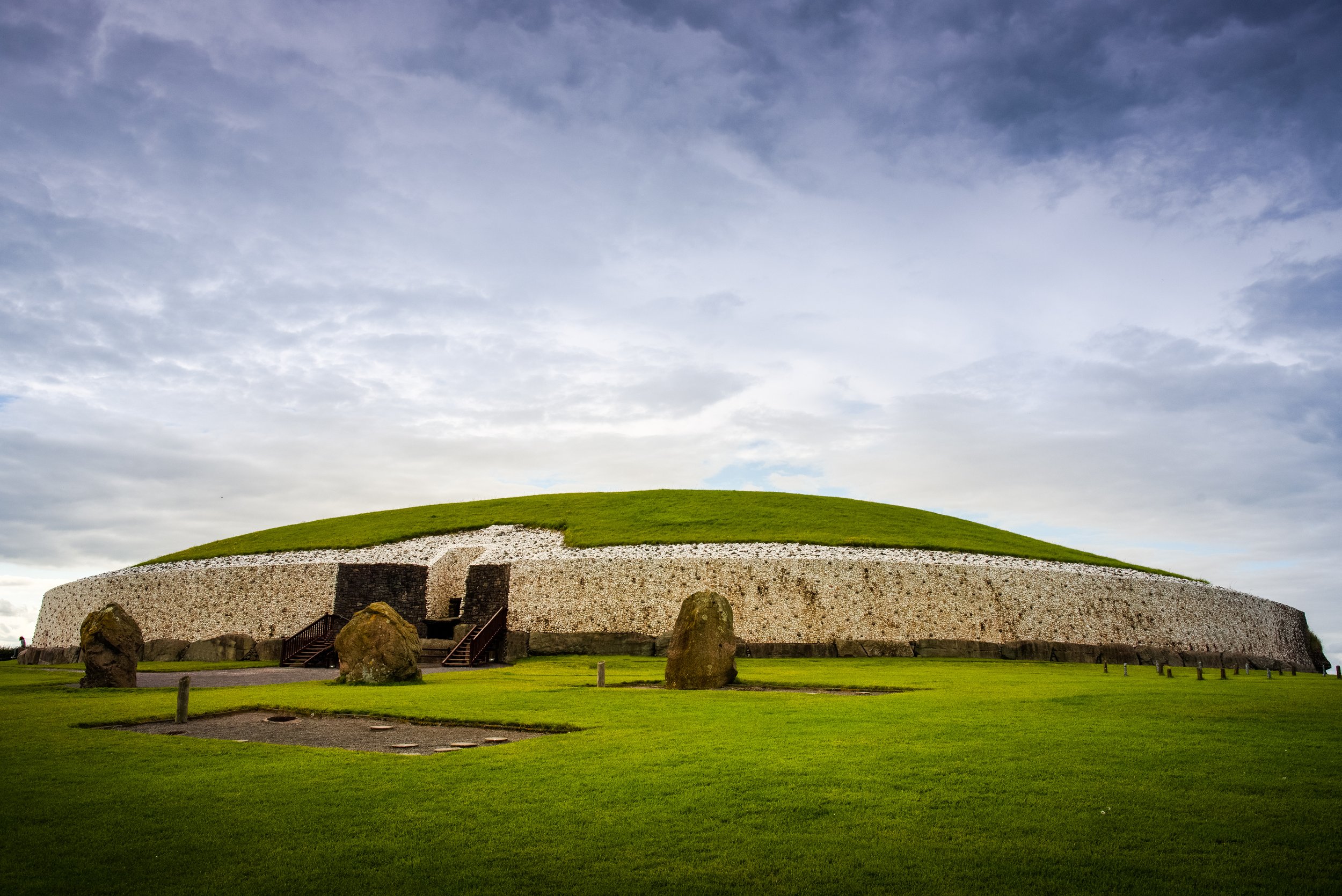Newgrange, Ireland 🇮🇪
Newgrange - Adobe Stock
Lost and found, an ancient monument hidden for thousands of years but told through myth and legend until its rediscovery.
Newgrange is the megalithic monument in Brú na Bóinne (the palace of the Boyne), Ireland. Half a millennium older than the Egyptian Pyramids at Giza and Stonehenge, Newgrange is a passage tomb built during the Stone Age around 3200 BC. It is made up of over 200,000 tonnes of stone brought from the terraces of River Boyne and white quartz from the Wicklow mountains.
Local folklore was passed down orally before being transcribed in medieval times.
One ancient myth is thought to represent the winter solstice. This tale was told for thousands of years before the site was excavated which confirmed its alignment with the winter solstice.
The Myth
In the tale, a god (Dagda) desires the Boyne river goddess (Boann) who lives at Brú na Bóinne (Newgrange) with her husband Elcmar. Dagda sends her husband away and impregnates Boann. To keep the pregnancy a secret from Elcmar, Dagda casts a spell making the sun stand still.
This spell makes Elcmar unaware of the time passed. Boann gives birth to Dagda's son Aengus. Eventually Aengus learns that Dagda is his real father and asks him for the land (the Brú). Dagda is hesitant and Aengus asks for the land for only "a day and night". Dagda agrees.
After the day and night, Dagda asks for his land back. Aengus refuses because all time is made up of day and night and claims the land forever. This tale is said to represent the winter solstice as the Irish word for solstice (grianstad) means sun-standstill.
The passage tomb is in pitch darkness all year except for approximately 17 minutes when it is briefly illuminated under the rising sun of the winter solstice.
A small opening above the entrance to the tomb called the roofbox allows the winter sun to pierce through. For thousands of years Newgrange was grown over and sealed shut and only lived in tales of Brú na Bóinne. In 1699 a local landowner removed a few stones which revealed the entrance to Newgrange's passage tomb.
Archaeologists continue to uncover hidden mysteries of the site.
The remains of at least 5 individuals were discovered in a sunken area of the tomb. After DNA analysis, one of the individuals was a child of first-degree relatives. This type of lineage usually only occurred in royal dynasties such as the pharaohs of ancient Egypt. Newgrange is featured in other Irish myths and legends and is considered a dwelling for the divine and a portal to the Otherworld.
It's one of the most important prehistoric sites in Europe and a UNESCO World Heritage site.


